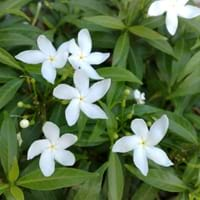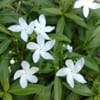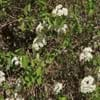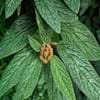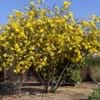Life Span
Annual and Perennial
Perennial
Type
Broadleaf Evergreen
Bulb or Corm or Tuber
Origin
India, Southeast Asia
South America, Argentina
Types
Not Available
Not Available
Habitat
gardens, Homesteads
Temperate Regions
USDA Hardiness Zone
10-15
5-9
AHS Heat Zone
Not Available
9-1
Habit
Spreading
Clump-Forming
Flower Color
White
Light Blue, Light Purple, Silver, Sky Blue
Flower Color Modifier
Bicolor
Bicolor
Fruit Color
Brown
Not Available
Leaf Color in Spring
Dark Green
Green, Light Green, Gray Green
Leaf Color in Summer
Dark Green
Light Green
Leaf Color in Fall
Dark Green
Several shades of Green
Leaf Color in Winter
Dark Green
Light Green
Leaf Shape
Oval
Grass like
Plant Season
Spring, Summer, Fall, Winter
Spring
Sunlight
Full Sun, Partial Sun
Full Sun, Partial Sun, Partial shade
Growth Rate
Medium
Medium
Type of Soil
Loam, Sand
Clay, Loam, Sand
The pH of Soil
Acidic, Neutral
Acidic, Neutral, Alkaline
Soil Drainage
Not Available
Well drained
Bloom Time
Indeterminate
Early Spring, Spring, Late Winter
Tolerances
Not Available
Drought
Where to Plant?
Ground, Pot
Container, Ground
How to Plant?
Seedlings, Stem Cutting
By dividing rhizomes, tubers
Plant Maintenance
Medium
Medium
Watering Requirements
Keep the ground moist but not water-logged, Requires watering in the growing season, Use Mulches to help prevent water loss during hot and windy weather, Water more in summer
Average Water Needs, Do Not over Water, Requires regular watering
In Summer
Lots of watering
Lots of watering
In Spring
Moderate
Moderate
In Winter
Average Water
Average Water
Soil pH
Acidic, Neutral
Acidic, Neutral, Alkaline
Soil Type
Loam, Sand
Clay, Loam, Sand
Soil Drainage Capacity
Not Available
Well drained
Sun Exposure
Full Sun, Partial Sun
Full Sun, Partial Sun, Partial shade
Pruning
Cut or pinch the stems, Do not prune during shooting season, Prune if you want to improve plant shape, Prune to control growth, Prune when plant is dormant, Remove deadheads, Shape and thin as needed
Remove damaged leaves, Remove dead branches, Remove dead leaves
Fertilizers
All-Purpose Liquid Fertilizer
All-Purpose Liquid Fertilizer
Pests and Diseases
Nematodes, Scale, Spider mites
Slugs, Snails
Plant Tolerance
Not Found
Drought
Flower Petal Number
Single
Single
Foliage Texture
Medium
Medium
Foliage Sheen
Glossy
Matte
Attracts
Bees, Butterflies, Insects
Bees, Birds, Hummingbirds
Allergy
Skin irritation
Not Available
Aesthetic Uses
Beautification, Ground Cover, Showy Purposes, Used for decorating walls, fences, gates, hedges, etc.
Showy Purposes
Beauty Benefits
Not Available
Not Available
Environmental Uses
Air purification
Air purification
Medicinal Uses
Antipyretic, Astringent, Cough, Kidney problems, Kidney Stones, Scabies, Ulcers
No Medicinal Use
Part of Plant Used
Flowers, Leaves, Root
Flowers
Other Uses
Showy Purposes
Not Available
Used As Indoor Plant
No
Yes
Used As Outdoor Plant
Yes
Yes
Garden Design
Container, Feature Plant, Hedges, Mixed Border, Tropical
Container, Lawns and Turf, Mixed Border, Rock Garden / Wall, Wildflower
Botanical Name
Tabernaemontana Divaricata
Ipheion uniflorum
Common Name
Crepe Jasmine
Spring Starflower, Springstar
In Hindi
Tabernaemontana
Spring Starflower
In German
Tabernaemontana
Frühling Borretsch
In French
Tabernaemontana
Spring Starflower
In Spanish
Tabernaemontana
primavera Flor de estrella
In Greek
Tabernaemontana
άνοιξη starflower
In Portuguese
Tabernaemontana
primavera Starflower
In Polish
Tabernaemontana
Wiosna Starflower
In Latin
Tabernaemontana
Spring Starflower
Phylum
Magnoliophyta
Magnoliophyta
Class
Magnoliopsida
Lilopsida
Order
Gentianales
Asparagales
Family
Apocynaceae
Liliaceae
Genus
Tabernaemontana
Ipheion
Clade
Angiosperms, Asterids, Eudicots
Angiosperms, Monocots
Tribe
Not Available
Gilliesieae
Subfamily
Rauvolfioideae
Allioideae
Number of Species
Not Available
Season and Care of Crape Jasmine and Spring Starflower
Season and care of Crape Jasmine and Spring Starflower is important to know. While considering everything about Crape Jasmine and Spring Starflower Care, growing season is an essential factor. Crape Jasmine season is Spring, Summer, Fall and Winter and Spring Starflower season is Spring, Summer, Fall and Winter. The type of soil for Crape Jasmine is Loam, Sand and for Spring Starflower is Clay, Loam, Sand while the PH of soil for Crape Jasmine is Acidic, Neutral and for Spring Starflower is Acidic, Neutral, Alkaline.
Crape Jasmine and Spring Starflower Physical Information
Crape Jasmine and Spring Starflower physical information is very important for comparison. Crape Jasmine height is 180.00 cm and width 180.00 cm whereas Spring Starflower height is 10.20 cm and width 5.10 cm. The color specification of Crape Jasmine and Spring Starflower are as follows:
Crape Jasmine flower color: White
Crape Jasmine leaf color: Dark Green
Spring Starflower flower color: Light Blue, Light Purple, Silver and Sky Blue
- Spring Starflower leaf color: Green, Light Green and Gray Green
Care of Crape Jasmine and Spring Starflower
Care of Crape Jasmine and Spring Starflower include pruning, fertilizers, watering etc. Crape Jasmine pruning is done Cut or pinch the stems, Do not prune during shooting season, Prune if you want to improve plant shape, Prune to control growth, Prune when plant is dormant, Remove deadheads and Shape and thin as needed and Spring Starflower pruning is done Remove damaged leaves, Remove dead branches and Remove dead leaves. In summer Crape Jasmine needs Lots of watering and in winter, it needs Average Water. Whereas, in summer Spring Starflower needs Lots of watering and in winter, it needs Average Water.
